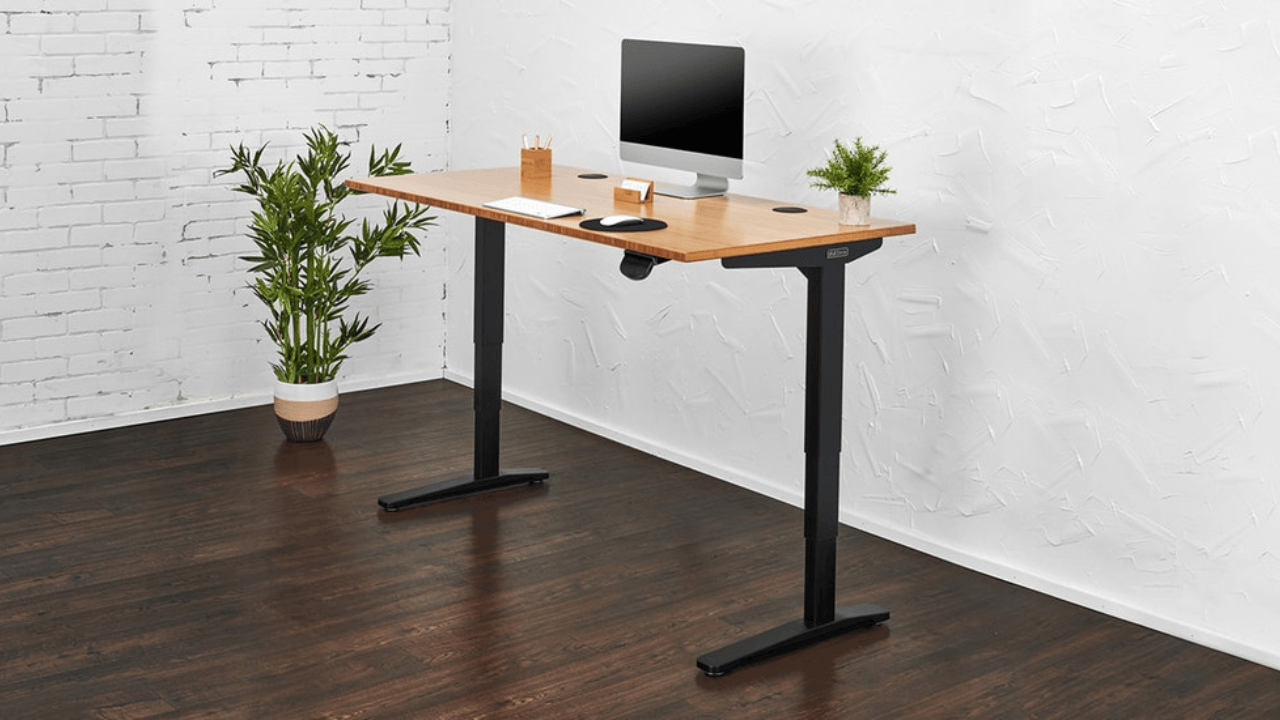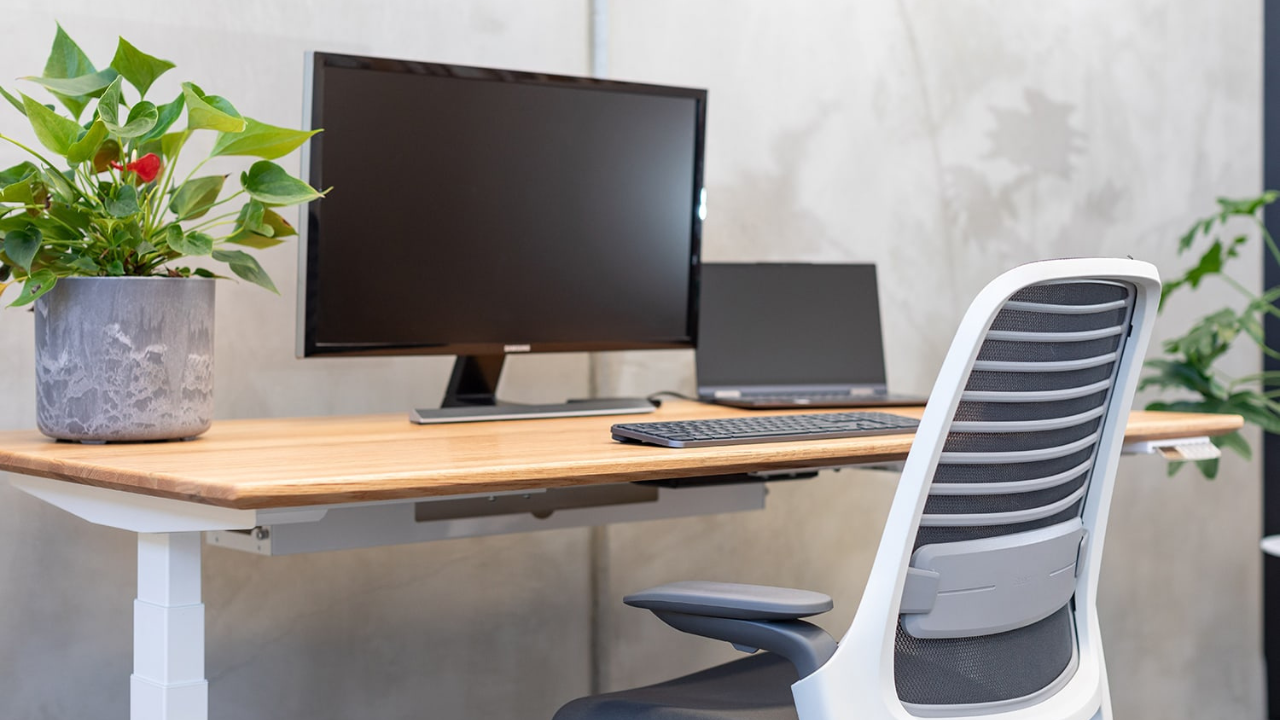Like any piece of technology, electric standing desks sometimes have issues. If yours has stopped working, don't worry. In this guide, I’ll walk you through common problems alongside practical solutions.
These desks often stop working due to a minute issue like an unplugged power cable or a complex challenge like worn-out motors. We'll begin with a simple troubleshooting checklist.
Initial Troubleshooting Checklist
Before looking at the cause of your sit-stand desk not working, ensure the following are in place or functional:
- All cables are securely connected.
- The desk is correctly plugged into a working power outlet.
- The desk is not overloaded beyond its weight limits.
- No obstacles are blocking the desk’s movement.
- You have completed a manual reset.
Still not working? Read on.
Sit-Stand Desk Not Working: Causes and Solutions

If you’ve checked these and your standing desk still won’t work, i.e., adjust up or down, a complex issue may be at play. Here are five common causes of electric sit-stand desk malfunction and how to fix them:
#1 - Power supply issues
Power supply problems are the most common reason an electric sit-stand desk may stop working. This occurs if the desk is unplugged or the power cord is loose. However, since we’ve checked this, the issue may be a faulty power adapter, transformer, or a blown fuse within the desk's power supply unit.
To fix this, try a different power adapter if you have one that is compatible with your desk. If you suspect a blown fuse, refer to the desk's manual to locate and replace the fuse. Some electric sit-stand desks have video instructions on how to do this. However, be careful not to void your warranty during the process. If you're unsure, reach out to the desk's manufacturer.
If none of these steps work, use a different power outlet to rule out outlet issues before proceeding with the other troubleshooting steps.
#2 - Control box issues
The control panel houses the buttons and display for adjusting the sit-stand desk height. However, it can become unresponsive due to disconnections, physical damage, or internal faults. Sometimes, individual buttons may stop working due to wear and tear or damage.
If your standing desk's control panel is detachable, try disconnecting and reconnecting it. Then, test the buttons to see if any specific ones are unresponsive. You’ll need to replace the control panel if some buttons still malfunction or the control panel is defective. If available, refer to the manufacturer's instructions for reset or recalibration procedures before replacement.
#3 - Motor issues
The motor is the most critical component of an electric sit-stand desk. Thus, issues concerning it are the most crucial. Your desk’s motor can burn out from overuse or electrical surges. Additionally, motors can overheat if used continuously for long periods, leading to temporary shutdowns.
If you used your desk extensively before it stopped working, allow the motor time to cool down. Motors often have thermal protection that temporarily disables them when they overheat. If it doesn't respond after cooling, it might be burnt out and require replacement. Contact the desk manufacturer or a professional technician to assess and replace the motor if necessary.
Environmental factors such as extreme temperatures or high humidity can also affect the performance of electronic and mechanical components. Use your desk in a moderate temperature and humid environment.

#4 - Software malfunction
Modern electric desks have software that controls height adjustment, memory settings, and other functionalities.
Sometimes, the software can malfunction and require a reset. Other times, the memory settings for height positions can become corrupted, leading to issues in the desk's operation. To solve this:
- Refer to the manual for instructions on how to perform a software reset.
- Reprogram the desk's programmable memory settings per the user manual.
- Ensure that the control panel and electronic connections are intact.
If these steps don't resolve the issue, you may require firmware updates or further technical support from the manufacturer.
#5 - Mechanical problems
Mechanical issues include obstructions in the desk's lifting mechanism, wear and tear of components such as gears and bearings, and alignment issues. These problems cause the desk to stop moving or operate unevenly.
To fix this, inspect the desk’s lifting columns and moving parts for obstructions or debris. Then, clean and lubricate these moving parts. Ensure the desk is assembled correctly and all parts are aligned and secured.

How to Maintain Your Standing Desk?

Maintaining your standing desk ensures longevity, functionality, and overall effectiveness. Here are eight helpful tips:
- Stay within the desk's weight limit.
- Regularly inspect the motor and lifting columns for debris.
- Wipe down the desk surface and dust the moving parts regularly.
- Apply a suitable lubricant to the desk's moving parts periodically.
- Tighten any loose screws and bolts every few months.
- Use cable management solutions to keep cords neat and untangled.
- Perform regular resets following the manufacturer's instructions.
- Avoid rapid and frequent height adjustments.
These maintenance tips ensure your standing desk remains in good working condition and offers good value over a long time.

Summary
These practical steps make troubleshooting and fixing issues with your electric standing desk easier. Remember to go over the initial troubleshooting checklists before diving into complicated matters.
If your electric standing desk still does not work, contact your desk’s manufacturer for a tailored solution or an accurate diagnosis of the problem. Was this article helpful to you? Leave us a comment below.








